How Far Must an Airsoft Sniper Rifle Shoot
How Far Must an Airsoft Sniper Rifle Shoot

Why Should You Go a Rifle Scope?
These days, most firearm enthusiasts employ some kind of optical sighting device on most of their guns. Not but rifles, but shotguns and handguns as well. There's a great reason for this: simplicity. Aiming through a telescopic or a red dot sight completely eliminates 1-third of the complexity of lining up iron sights. With metal sights, you are required to line up the rear sight with the front sight and your target. With a scope, you simply have to line up your crosshairs (reticle) with your target. Information technology's much easier to learn to shoot with a scope than iron sights, and since about rifle scopes besides magnify, your target appears closer which enables you to place a more than precise shot
Novice shooters may exist overwhelmed past the vast selection of scopes on the market. In this guide, we'll pause down some important features and specifications to consider while yous store for the perfect riflescope.
How to Decide What Riflescope to Buy
You lot don't apply a seven-ounce claw hammer to pound in 16 penny nails or a infant sledge hammer for finishing nails. Magnumitis sinks its ugly claws into greater numbers of hunters every twelvemonth. Cartridges and scopes get more powerful annually, and uninformed marksmen often use these combinations for whitetail deer where well-nigh all shots are well nether a hundred yards.
Overpowered calibers and high-magnification scopes account for more than missed and wounded game than standard loads with appropriate scopes. "More" does not mean you can shoot any farther. Bullets get faster and optics magnify more than because they sell amend.
Manufacturers will brand anything they recollect plenty people want. Pinkish scopes? Start a petition. Square main tubes? Have plenty people phone. This is fine. Some people might telephone call this progress. But you need the right tool for the job.
A 3-9x telescopic, specifically a 3-9x40 telescopic, is considered one of the all-time scopes for deer hunting, and for expert reason. 3 power is low enough, with a large plenty exit student and field of view for close shots in most applications, and nine power gives you enough of magnification for longer shots. We accept a wide selection of three-9x scopes for auction if you desire to take a wait at available options.
A major percentage of people now want to choose scopes for whitetail deer with meridian magnifications of fourteen, or twenty, or fifty-fifty more. This is, by and large, a error. Less is more. Use the kiss principle. Bells and whistles similar giant turrets and chimera levels are oft a waste, particularly in lower-priced models.
If you lot aren't experienced enough to know why yous want these upgraded features, then y'all're just adding a more complicated and less-reliable optic to your firearm. You have plenty to do without troubling over how to piece of work your scope. Our best-rated riflescopes have quality attributes that can exist relied on.
Not only does higher magnification subtract from your go out pupil size and available light, but the low terminate of a high magnification scope is much too high to accept a very close shot. Your scope on a whitetail burglarize should almost ever be kept at its lowest power. If that ability happens to be five or six, many times your deer appears every bit a hairy patch through your scope, your field of view is so narrow you can't find him, or it's so nighttime you can't make him out.
Just as those bold Navy pilots, it's prudent to know how low a scope goes, not how loftier. Low is more important in most cases. Y'all can e'er shoot far with low power, or have time to turn the telescopic up, just you can't shoot close with high power considering your field of view (FOV) and leave educatee are also small.
What Do the Numbers Mean on a Rifle Scope?
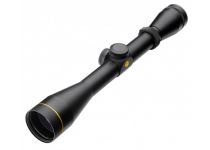
In a 3-9x40 scope, the three means three power, or 3x. This means that the prototype you lot see through the scope appears three times (3x) closer than it does with your naked eye. The 9 means nine ability, or nine times (9x) closer than information technology appears with your naked middle. The forty (40) is the objective lens diameter in millimeters. This is a variable scope because y'all can arrange the magnification of the scope from three to nine, stopping anywhere in between. You lot would describe this scope as a "three to nine by forty." The larger the magnification range, the more than y'all will pay, but it makes for a more versatile scope. In a lot of cases, a versatile scope means that you tin can use one optic for multiple applications instead of ownership another i. Y'all tin read more than most scope numbers here.
Light Transmission and Center Relief Explained
Scopes don't assemble light, as virtually people recall, although the term "calorie-free gathering ability" has get accepted jargon. Scopes transmit bachelor lite through the lenses to your eye, always losing a chip in the process. The best a scope can hope to offer in light manual is about a theoretical 98%, which only the very finest (read expensive) scopes can hope to approach. Anything above 95% is considered great, and most scopes are effectually 90%, requite or accept a bit. You have to have light transmission figures with a grain of salt. Manufacturers measure out light transmission differently, sometimes for specific wavelengths to boost their numbers.
The more magnification you take, the less lite you become to your eyepiece. The larger the objective lens, the more than you get through your eyepiece.
Aged eyes may dilate to only near four millimeters. Younger eyes may open upwards to 7 millimeters and even more. An exit pupil much larger than your eye tin use is wasted. Similar drinking out of a fire hose.
The pocket-sized circle of lite that appears in the eyepiece when you lot agree a telescopic at arm's length is called an exit pupil. Hither's an interesting experiment to help explain information technology. Accept a variable telescopic, put it at its lowest ability, and hold it at arm's length. See the circumvolve of light in the ocular lens? That is the exit pupil. The bore of it in millimeters is the exit educatee size. Now turn the telescopic up to its highest ability and endeavor it once more. Run across how much smaller it gets? Imagine if you are using this telescopic during poor lighting weather as common in hunting situations, like dawn or sunset. How small and dark volition that exit pupil be? How well do you think you'll be able to run across through that tiny circle of light?
A formula for exit pupil is as follows: Divide the objective lens size in millimeters past the magnification. Instance: if your three-9x40 scope is set at 3x, twoscore divided by 3 equals 13.3 millimeters, which is big enough for almost all low light applications. If your scope is prepare at 9x, 40 divided by nine equals 4.44 millimeters. The difference in available light from the larger go out educatee is significant.
The larger the go out pupil, the less critical the position of your head in relation to the scope is, also. The altitude that your eye must exist to the ocular lens to get a total, clear picture is called centre relief. Lower powered scopes volition have a larger range of altitude available for a full view. Higher powered scopes are sometimes very critical in relation to the centering of your eye through the middle of the tube, and the distance your center must be from the ocular lens. Sometimes there is only a half inch closer or farther you may be to encounter the whole available view.
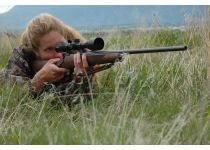
The largest heart relief currently available for a standard riflescope is almost 4 inches. Four inches is nifty, and offers enough room for the gun to recoil and not hitting your confront, if you lot practise your job correctly. Most standard riflescopes have between three and three and a half inches. College recoiling guns including slug guns require lots of middle relief to foreclose "scope eye" or the cutting that some people become from the ocular lens of the telescopic coming back nether recoil and cutting a semicircular gash above the shooter's eye. Shotgun, muzzleloader, and dangerous game scopes sometimes take 5 or half dozen inches of eye relief to prevent scope eye, but often at the expense of field of view.
IER (Intermediate Eye Relief) scopes, also known every bit "Scout scopes" are mounted in front of the receiver of a long gun and require around 9-12 inches of eye relief. LER (Long Eye Relief) scopes, also known as "Pistol scopes" used on handguns may accept around 16-twenty inches of eye relief.
When mounting a scope, it should be at its highest ability and in a position that your head and neck are comfortable. Your head should exist placed on the stock in the position you will exist shooting the well-nigh. For instance, if y'all sight in a gun while shooting off a bench rest, your head tends to sneak up on the stock a bit. If this gun is then used for snap shooting for deer in the woods, your heart relief and sight moving picture might not be optimal. Always mount your scope so you don't have to move your caput for optimal field of view. Motion the scope to your eye, not your eye to the scope.
What Is the Best Telescopic Magnification for Hunting?
As we have already discussed, a scope in the 3-9 magnification range for a whitetail deer gun is pretty standard. In Western states for mule deer or antelope, a iv-12 or 4.4-14 is not too much, especially when your average shot is many times as long as it would be in the eastern whitetail woods. On the plains or in open country you can even get out your scope at a higher ability. You lot can oft encounter all around you, with little chance of an animal surprising you, which they seem to practise occasionally, anyway. In some cases you might have to shoot from hilltop to hilltop, or mount to mountain. Hunting scopes in this magnification range are excellent for target shooting every bit well.
For prairie dogs or long-range target shooting, a 6-20x or 8-25x variable scope does not have too much power. Keep in mind though, on hot days, mirage and heatwaves can make a high power telescopic nigh unusable.
Some people prefer fixed power scopes for their simplicity and fewer moving parts. On some rifles, people similar nothing more than a fixed 4x. Squirrel rifles and many .22s for plinking are well equipped with this magnification. Some target shooters utilize fixed-power scopes with high magnification such as 24, 36, or 40 power.
| Beast(s) to Chase | Ideal Scope Magnification |
|---|---|
| Whitetails | 3-9x |
| Mule Deer / Antelope | 4-12x or four.iv-14x |
| Prairie Dogs | 6-20x or viii-25x |
| Squirrels | 4x (Fixed) |
A 2x scope is the most common for a handgun in a magnified scope. The more magnification you lot have, the harder information technology is to find your sight motion-picture show and target, and the more critical and closer your center relief becomes. Shooting a handgun with a scope requires lots of practice, especially with anything over 2x. Higher powered variable scopes are really for the experienced shooter and are used almost exclusively from a rested position.
Shotgun scopes and muzzle loaders oftentimes have lower power scopes for short-range deer hunting with slugs, and for turkey. Again, a fixed 2x is adequately standard, but the tendency is for variable power 2-7 or even 3-9 scopes. Sabot slugs for shotguns and muzzleloaders fly much faster and flatter than the Foster-type slugs and Maxi Balls they replaced not too long agone. These new projectile types make shots that were fashion out of range just two decades agone now very possible. Parallax is often factory set at fifty, threescore, or 75 yards. Shotgun and muzzleloader scopes generally have maximum available eye relief to forestall "telescopic eye."
Objective Lens Size and Tube Diameter Explained
Let'southward talk about objective lens sizes. 40 to 44mm is pretty standard on a medium variable rifle scope. Information technology's trendy these days to accept large objective lenses of 50, 56, or even 75mm and more in some cases. In virtually cases, these are unwarranted, and the largest ones are laughable.
Large objective lenses will simply transmit more useable calorie-free than smaller ones if they are set at their highest power in the dimmest conditions. The detriment is condolement and ease of eye alignment. With a properly mounted scope, yous should be able to close your eyes, shoulder your gun with a proper, repeatable stock weld (the stock weld is house but comfortable and repeatable position of your face on the gun stock), open up your eyes, and wait directly through the centre of your scope every time.
Large objective lenses preclude this from happening considering of the ring top required to go along such a big lens off your gun butt. Some scopes require such loftier mounting that just your mentum touches the stock. These scopes are also heavier, clumsier, unwieldy, unbalanced to carry, slower and less comfortable to shoot. Some of these scopes weigh up to an unbelievable 3.5 pounds! Kind of like towing a motorcycle trailer or taping a bowling ball to your caput.
Leupold has their excellent VX-L line of scopes that combine a big objective lens with a contoured bottom that doesn't interfere with your gun barrel, and lets you mount up to a 56mm lens with low rings!
The larger 30mm primary tubes on some scopes are most useful for allowing for a greater range of height adjustments, non greater lite transmission, although resolution can meliorate. In fact, most 30mm scopes have the same size lenses that are in 1in tubes. Over again, a larger tube does non mean more light.
How to Choose Scope Mounts, Rings, and Bases
Nearly scopes, peculiarly in America, have chief tubes that are 1 inch in bore. That ways that they use 1in rings. Some scopes accept 30mm main tubes. Those scopes volition use 30mm rings. There are several primary types of bases that are used to connect the rings to your firearm. You lot need to know what kind of base y'all take to find out the exact type of the 1in or 30mm rings yous will use for your specific scope. The height of the rings is determined mainly by the objective lens diameter, only as well the barrel thickness, action size and blazon, ocular bell bore, and bolt elevator. Here is my commodity on Choosing Mounts, Rings, and bases.
What Types of Lens Coatings Are There?
Most scopes are fogproof and waterproof. Almost scopes have coated lenses. The coatings are expensive and vary in type, number, and quality. It is very possible to take a scope with single-coated lenses to greatly outperform a telescopic with multicoated lenses. It all depends on the quality of the glass and the coatings. Expert quality does non come up cheap.
The following are accepted terms for coatings:
- Coated: A single layer on at least one lens surface.
- Fully Coated: A single layer on all air to glass surfaces.
- Multicoated: Multiple layers on at to the lowest degree one lens surface.
- Fully Multicoated: Multiple layers on all air to drinking glass surfaces.
Coatings reduce glare, and loss of low-cal due to reflection. More than coatings normally atomic number 82 to meliorate light transmission and sharper contrast. Many coatings are also scratch resistant.
Many optics have coatings that preclude water from staying on glass.
Hydrophilic coatings cause h2o to sail from drinking glass.
Hydrophobic coatings cause water to bead on glass.
Both work to shed h2o and allow clearer views in rain or misty conditions.
Field of View Explained
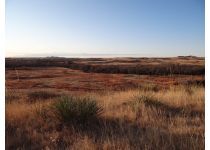
Field of view (FOV) is measured in feet at 100 yards. This is the amount of view y'all see through your scope from correct to left at that altitude. Equally magnification is increased, FOV goes down. As magnification is decreased, FOV goes up. For instance, a typical 3x variable scope might have a FOV at 100 yards of a fleck over 30 feet, and at 9x, the FOV would be around 14 feet. A larger objective lens bore volition not modify these figures. Field of view is directly related to the construction of the eyepiece.
What Are Tactical Rifle Scopes?
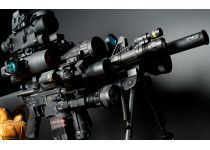
Another tendency today is the sale of anything called "tactical." Military semi-automated rifles in the hands of advertisement-gobbling civilians frequently have super-high magnifications up to, and even including, a ridiculous 40 power scope with an cool 75mm objective lens weighing in at several pounds.
Real military snipers apply peak-quality fixed 10x scopes about often. These accept mil-dot reticles that, in the hands of a practiced private or squad of two, often with calculators and knowing the judge size of their target, tin estimate altitude and hold-over or height clicks. Nearly all mil-dot calculations must be made with scopes at their highest ability. Fixed ability scopes eliminate miscalculations past having a scope set at less than its highest power.
The "mil" in mil-dot does not mean military machine. It means milliradian, a unit, and is about iii.6 inches at 100 yards.
Stateside police force enforcement agencies most often use variable scopes of the highest quality, and mil-dot type reticles are not often used. They clutter the field of view, and the longest shots almost always taken are across a street, well under 100 yards. Range interpretation with a reticle is never required.
Mil-dot reticles in almost people'due south scopes are null simply a gimmick and an added expense. They will never employ them the way they were designed, which is fine. Y'all can still use them in the field to more than accurately estimate agree-over at distances, especially for prairie dogs or plinking, or just because you want it. The reticles in a mil-dot do subtend (comprehend) more of your target than necessary, though. But purchase what you like for any reason. You don't have to buy or not buy something because of someone else'due south stance, or use it every bit designed.
The Best Scopes Are Repeatable
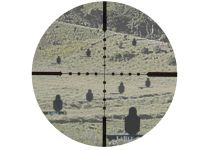
High-quality scopes are repeatable. That is, if you conform your windage and acme dials for point of affect at one setting, and then motion them around and shoot in unlike places, and so back to the original place, the point of bear on will be the same as it was when you started.
Skillful quality scopes will likewise move the indicate of touch when you accommodate your dials, without having to "settle in." That is to say, if you lot motility your acme dial upward three inches, your signal of impact should immediately reflect that. Sadly, more oft than not, bottom quality scopes won't exercise this without shooting a few times starting time, to "settle in" the scope's internal adjustments. Some people "tap" on their scope with a coin or cartridge case to help this process. "Shooting a box" is a good exam of repeatability.
But repeatability is non that of import in many scopes. Generally, you will sight in a rifle and leave it solitary except for small adjustments required due to changes in ammunition blazon. If you accept a .22 and simply want an cheap telescopic to top it off, you'll generally be fine without absolute repeatability, which increases the toll of the production significantly.
Turret Adjustments and Infinitesimal of Angle (MOA) Explained
Adjustments are made in "Minutes of Angle" (MOA). This is a unit of measurement of a circumvolve, and is one.0472 at 100 yards. For all applied purposes, it is chosen 1 inch at 100 yards. It is 2 inches at 200 yards, 5 inches at 500 yards, one half inch at 50 yards, etc.
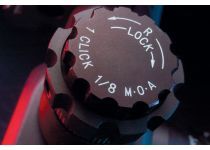
The turrets are housed in the center of your scope tube in a protrusion called the turret housing. The turrets are sometimes fabricated to be turned with a coin, and sometimes they are finger adjustable. Target turrets are tall, and the clicks are hands seen and felt. Target turrets are nearly suited to use where they won't get banged around or snagged on gear or castor. This is why hunting scopes don't have them, and instead are much lower contour.
The turret caps are ofttimes sealed with an "O" ring, and assistance prevent moisture and droppings from inbound the scope through its weakest parts. Many scopes at present have large dials, but with locking adjustments, to prevent their inadvertent move. Almost turrets besides take a manner to motility or remove a turret or portion of a turret to correspond to goose egg after you sight it with a detail load.
What Are Bullet Driblet Compensator (BDC) Reticles
At the plow of the century, BDC dials and reticles were often ready for just a few cartridges, like v.56 (223) 55 grain and 62 grain, or seven.62 (308) 168 grain, and were very suspect in terms of accurateness. Atmospheric conditions are varied, but the BDC dials stayed the same regardless of cartridge velocity, projectile BC (ballistic coefficient), temperature, butt length, or elevation. They were ballpark, not precise, except for rare cases.
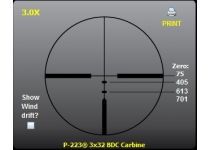
Enter the Nikon "Spot On Technology" website. This appeared in the mid-2000s, and was my favorite new product at the Vegas Shot Show that year. It is simply amazing. But enter in whatsoever cartridge's ballistic information, whether manufacturing plant or mitt-loaded, and go the trajectory for that cartridge with any blazon of atmospheric data. It is used to detect the distances that the Nikon BDC reticle circles line upward with at any magnification. It will besides piece of work with any crosshair scope from any visitor. You can even impress it out for reference or size it to be taped to your stock or scope for quick reference in the field.
Since "Spot On", many other companies accept developed their own programs that have like attributes. Some are very good, some are a bit heady and complicated. These programs are the most valuable development in riflescope use in decades and take the well-nigh to do with hunters' ability or desire to take longer shots than ever before possible. Whether you move a turret to adjust for distance, or use the stadia lines or circles in your reticle, these are here to stay, and a lot of the guessing game is completely gone. Used with skill and a laser rangefinder, these reticles and websites combine to make you feel quite empowered. They assume the shooter is capable of making ethical shots in the field, and the only style to ensure this is to fire pulverisation with trigger time and practiced practice, not only shooting. For farther information on reticles, take a look at our Advanced Reticle Guide.
How to Sight In Your New Scope
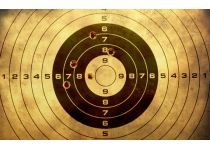
If your scope is correctly mounted, using a boresighter should go you lot close plenty to print a bullet hole on a big target at fifty yards. No boresight, even a laser boresight, will sight in your gun for you. You must shoot the gun and adjust your telescopic accordingly to sight information technology in. Every gun is an individual. No ii are akin, fifty-fifty if the serial numbers are consecutive. If a particular gun shoots a certain kind of ammunition well, there's absolutely no guarantee that an identical gun will like information technology at all.
If you mount a good scope on a good gun with expert rings and bases, and find a sure kind of ammo that it shoots well, with a bullet that serves your purposes well, YOU WIN! Buy a case of the same exact ammo with the same lot number, continue it with the gun, and don't change a thing.
Also, your scope is at its strongest when your windage and tiptop adjustments are in the center of the available adjustment range. This is called mechanical zip. When you lot buy a telescopic, plow the dials all the way i way and then the other, counting how many total and partial turns, and so split that number and discover the middle. Start there for your adjustments. Many rear bases accept windage adjustments. Employ them.
How Much Should You lot Spend on a Riflescope?
I would rather have a great scope than a neat gun. Your gun will work when you pull the trigger, but if you can't see where to place the bullet, the gun is useless. If you tin can't rely on bullet placement, why fifty-fifty hunt or target shoot? I'll never understand how people tin take a week or more vacation, spend $1000.00 on a rifle, and sometimes thousands on a hunt, and buy a $150.00 scope mounted on $20.00 rings and bases. I know of many ruined hunts, endless dollars lost, and guns wrapped around copse because of faulty scopes. I would rather spend $500.00 on a gun and $500.00 on a scope with skilful rings and bases, and lots of ammo and trigger time getting to intimately know my gun. During hunting situations, yous often take plenty to call back about, including darkening, scent, and often at high elevations, only breathing. Yous shouldn't have to think nearly having to work your gun.
Put silk tapestry over a pressboard couch and you still have a piece of junk. A cheap ii-ton jack may work once or twice before it folds into itself like a crushed beer can. Spend every bit much equally yous can afford on your new rifle telescopic, and less on the firearm or something else if you have to, but get expert glass you can count on and larn how to utilize it well. Utilize a rangefinder if you want, but for long shots, y'all must know your bullet'due south trajectory and be confident that you tin can place all your shots in the vital area of your quarry every fourth dimension. Good glass makes it easier for success.
Aim Hard,
Steven Chiliad. Ledin
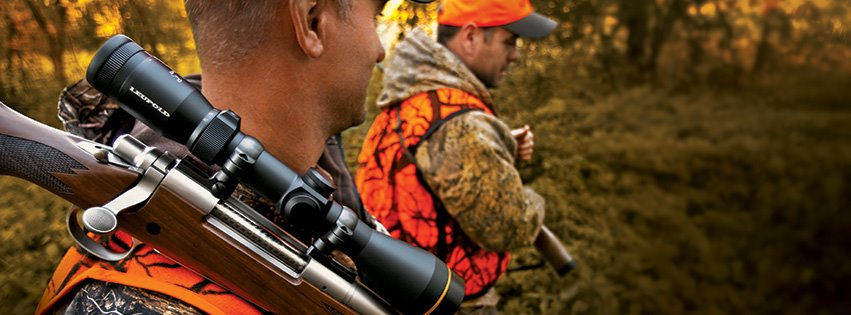
Shop Popular Rifle Telescopic Brands
How Far Must an Airsoft Sniper Rifle Shoot
Posted by: gradycongs1965.blogspot.com
0 Response to "How Far Must an Airsoft Sniper Rifle Shoot"
Post a Comment